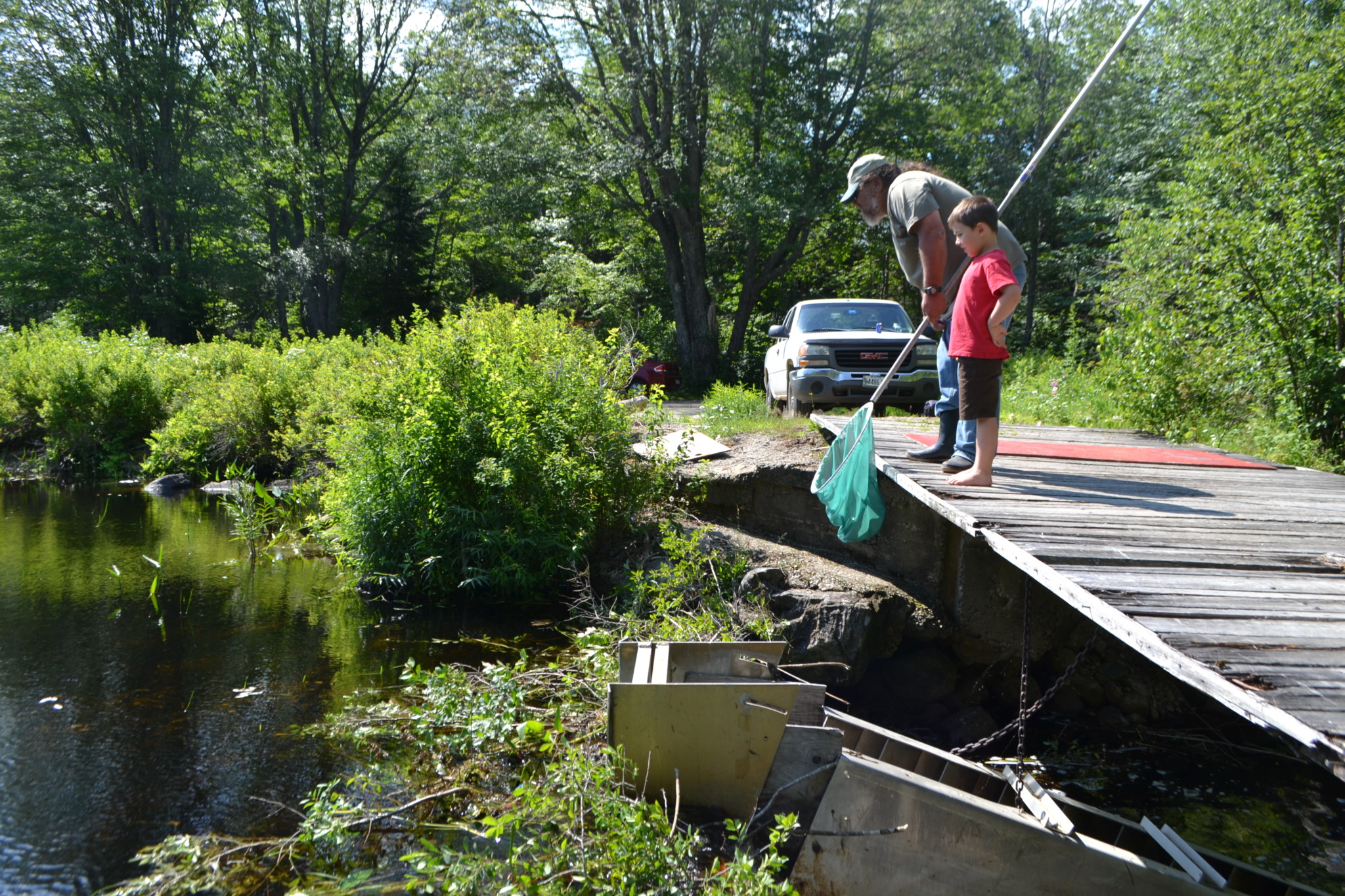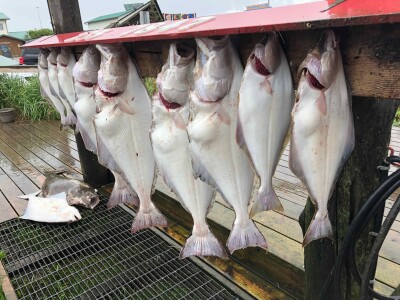When Bailey Bowden was growing up in Penobscot, Maine, he would often take his little red wagon down to the garage on the corner, fill up his gas can (for less than a dollar), and take it back home to wait for his father to return and take him fishing. He had to have that gas can ready, because he wouldn’t take no for an answer.
That same spirit was waiting for the Department of Marine Resources when they closed local fisheries as the result of a study that showed a decreasing population of alewives. The problem, according to Bowden, whose family has been fishing Northern Bay for seven generations, was that there were fish — a lot of fish. He decided not only to prove it, but to help collect the data needed to reestablish the local fisheries. In that moment, Bowden turned from fisherman to fisheries activist.
Two fish passage sites of concern are Pierce Pond and Wight Pond, both in Penobscot and both crucial habitat for anadromous alewives. Bowden has been fishing both ponds for much of his life, so he is familiar with their unique problems. Dams, ineffective fish ladders, changing water levels, and other obstructions have been hampering the population. However, Bowden and the Penobscot Alewife Committee have been netting the fish up and over these obstructions to find their way to their spawning grounds.

Christina Allen shows local school groups how anadromous fish return to spawn through a restored fish passage site in Surry, Maine.
In fact, this year millions of juvenile alewives swam in a thick school at Pierce Pond, eventually finding their way down the stream and into the Northern Bay estuary. At this time next year, the installation of permanent fish ladders with rock weir pools should make that migration a whole lot easier.
Alewives are a major component in the food chain for marine mammals, wading birds and larger fish. They are so precious that in 1827, just seven years after Maine became a state, its leaders passed the first laws regulating the taking of alewives. However, despite their importance, there is little data to show for this vital link in the food chain. Now, thanks to volunteers like Bowden, quality scientific data about this important watershed and the anadromous fish that rely on it are being collected for the first time. Some of this data includes monitoring zooplankton levels in the ponds and estuaries, which helps to determine how well nourished the fish are and how that affects their growth rate and reproductive potential. They are also collecting samples to gather DNA and gauge the ages of the fish that are returning to spawn.
This data could help answer some big questions: Do juvenile alewives that migrate into an estuary in July grow faster and therefore migrate into the open ocean a year earlier than the alewives that leave the ponds in October? Would this explain why some fish reproduce at age 3 and some at age 4? If they were born the same year, are they delayed in development as a result of their environment? And is this delay in reproductive development affecting the fish population? Bowden’s work will help to answer these questions and further advance our understanding for how to protect this vital resource and sustain the fish population.
For Bowden, one of the best things to come out of all this demanding work is the opportunity to educate young people. “The newest generation of kids, they’ve lost their connection with these anadromous fish runs. The best way to reconnect the kids with the fish was to put them in the brook and let them pass the fish over the obstructions.”
Grant funding from Maine Outdoor Heritage Fund, secured by Blue Hill Heritage Trust, will help establish an educational site planned for the Pierce Pond Fishway, complete with walking path, viewing areas and interpretive signage. This will allow school groups to get up close and personal with these fish and interact with the people in their communities who are working to protect this vital resource.
According to Bowden, Maine Coast Heritage Trust and Blue Hill Heritage Trust have been the key drivers on fishway improvement. He also credits the Downeast Salmon Federation with their work in public outreach and education, as well as Maine Center for Coastal Fisheries’ work with data gathering and policy work. But if you ask us, we would say this is thanks to people like Bowden fighting for what he believes in and building grass roots support — proof that one person really can make a difference.







